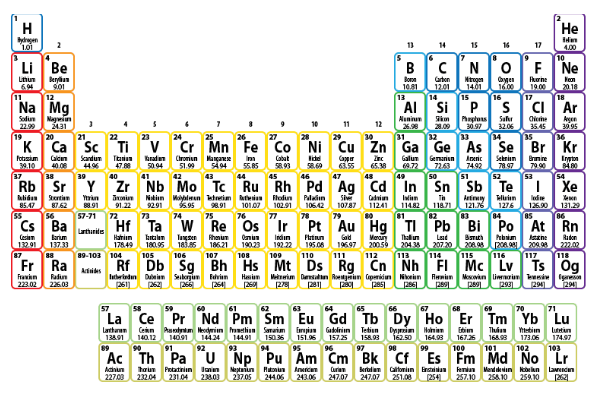
Atomic radius of carbon and oxygen is 67 pm and 48 pm. The atomic radius of nitrogen is:
(A) 69 pm
(B) 45 pm
(C) 56 pm
(D) None of the above
Answer
221.4k+ views
Hint: To solve this question, understand the nature of the trends observed in a periodic table within a given period. On the basis of these relations, derive the value for the atomic radius of oxygen
Complete Step-by-Step Answer:
The elements that are given to us, namely carbon, nitrogen and oxygen, all of them belong to the same period in the periodic table.

As we can see, the elements are arranged according to their atomic numbers in the periodic table. As we move from left to right in a period, the atomic number increases. By this definition, we can that the atomic number of carbon is less than nitrogen is less oxygen.
Like this, various other trends are followed as we move from left to right in a period. Some of these trends include decrease in atomic radius, increase in electronegativity, increase in atomic masses, etc. the one trend that would help us in solving this question is that of decreasing atomic radii.
As we move from left to right in a period, the atomic radius of elements keeps on decreasing. This means that the relation between the atomic radii of carbon, nitrogen and oxygen would be:
Carbon > nitrogen > oxygen
Now, we are already given the values for atomic radii of carbon and oxygen. Hence,
67 pm > nitrogen > 48 pm
From the given options, the only value which satisfies this condition is 56 pm
Hence, Option C is the correct option.
Note: The number of energy levels increases as you move down a group as the number of electrons increases. Each subsequent energy level is further from the nucleus than the last. Therefore, the atomic radius increases as the group and energy levels increase. As you move across a period, atomic radius decreases.
Complete Step-by-Step Answer:
The elements that are given to us, namely carbon, nitrogen and oxygen, all of them belong to the same period in the periodic table.

As we can see, the elements are arranged according to their atomic numbers in the periodic table. As we move from left to right in a period, the atomic number increases. By this definition, we can that the atomic number of carbon is less than nitrogen is less oxygen.
Like this, various other trends are followed as we move from left to right in a period. Some of these trends include decrease in atomic radius, increase in electronegativity, increase in atomic masses, etc. the one trend that would help us in solving this question is that of decreasing atomic radii.
As we move from left to right in a period, the atomic radius of elements keeps on decreasing. This means that the relation between the atomic radii of carbon, nitrogen and oxygen would be:
Carbon > nitrogen > oxygen
Now, we are already given the values for atomic radii of carbon and oxygen. Hence,
67 pm > nitrogen > 48 pm
From the given options, the only value which satisfies this condition is 56 pm
Hence, Option C is the correct option.
Note: The number of energy levels increases as you move down a group as the number of electrons increases. Each subsequent energy level is further from the nucleus than the last. Therefore, the atomic radius increases as the group and energy levels increase. As you move across a period, atomic radius decreases.
Recently Updated Pages
Types of Solutions in Chemistry: Explained Simply

States of Matter Chapter For JEE Main Chemistry

Know The Difference Between Fluid And Liquid

Difference Between Crystalline and Amorphous Solid: Table & Examples

Conduction Explained: Definition, Examples & Science for Students

Balancing of Redox Reactions - Important Concepts and Tips for JEE

Trending doubts
JEE Main 2026: Application Form Open, Exam Dates, Syllabus, Eligibility & Question Papers

Derivation of Equation of Trajectory Explained for Students

Hybridisation in Chemistry – Concept, Types & Applications

Understanding the Angle of Deviation in a Prism

How to Convert a Galvanometer into an Ammeter or Voltmeter

Degree of Dissociation: Meaning, Formula, Calculation & Uses

Other Pages
NCERT Solutions For Class 11 Chemistry Chapter 7 Redox Reaction

JEE Advanced Marks vs Ranks 2025: Understanding Category-wise Qualifying Marks and Previous Year Cut-offs

Hydrocarbons Class 11 Chemistry Chapter 9 CBSE Notes - 2025-26

Thermodynamics Class 11 Chemistry Chapter 5 CBSE Notes - 2025-26

NCERT Solutions ForClass 11 Chemistry Chapter Chapter 5 Thermodynamics

Equilibrium Class 11 Chemistry Chapter 6 CBSE Notes - 2025-26




